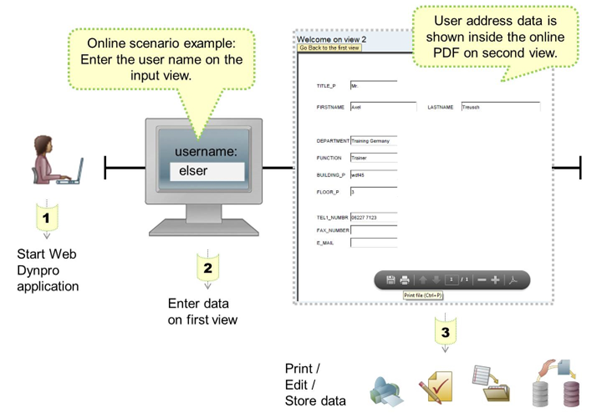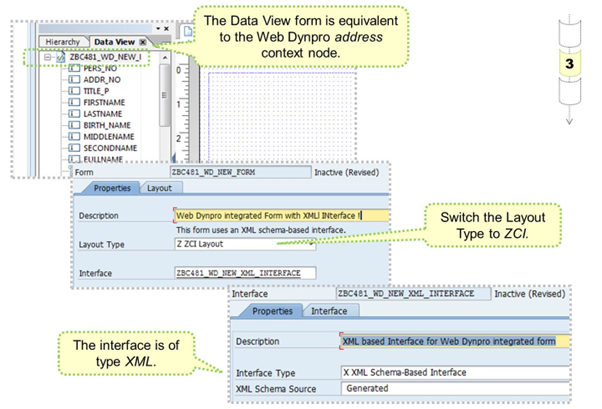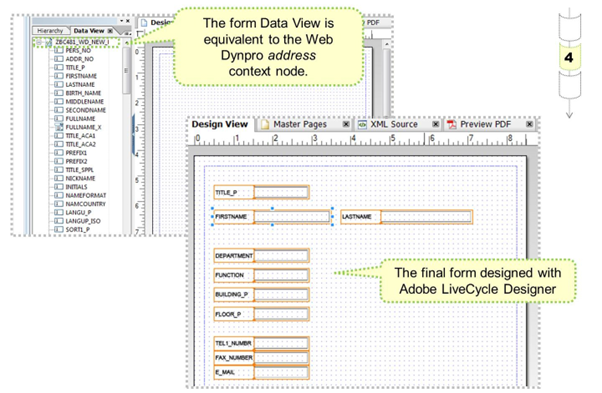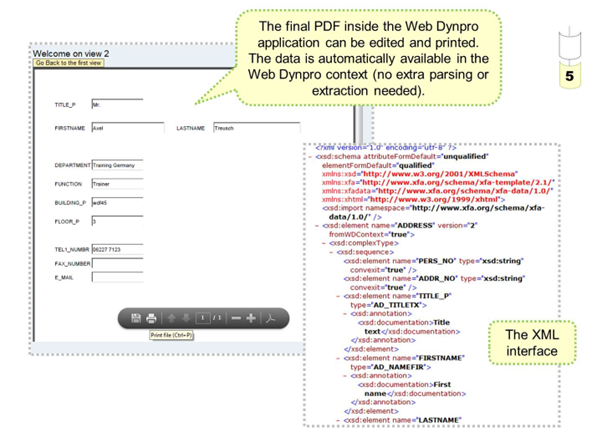Integrate New Forms in Web Dynpro

A Web Dynpro application consists of two views:-
- The first view is the input view. The user name (see SU3 transaction) is entered.
- The second view carries the result: the user's address data. Now the address parameters can be edited, stored, printed, and so on.

Before a new online PDF form is built via forward navigation, create the Web Dynpro context elements that you want to use in the PDF form.
In this example, the import and export parameters of BAPI_USER_GET_DATA are used as context elements. The context can be created manually or automatically via a service-call
The BAPI offers the following parameters:
- USERNAME is the parameter below the IMPORTING context node.
- ADDRESS is the parameter below the EXPORTING node. This parameter will carry the resulting data.
dataSource is bound to the ADDRESS context node, which represents the structure type BAPIADDR3.
In this special example, the form only needs data held in the ADDRESS node. It is a structure and has a cardinality of 0..1 or 1..1.

When you enter the name of the new PDF form into the field, templateSource will launch a pop-up asking you to create the new XML interface. This interface will be the basis of the new interactive form.
Type in the name of this new interface and choose the context button to adapt the needed context element to the new XML-based interface of the form.
In this example, the context element ADDRESS is used. It holds the result parameters of the BAPI call and will pass the data to the Adobe form.

After associating the context element with the form interface, Adobe LiveCycle Designer appears and the layout of the form can be constructed.
You can drag and drop the context elements bound to your form onto the form layout.

The figure shows an example of the interactive online form visualizing the user's address data.
The data view matches the Web Dynpro context element ADDRESS.

Beside the advantage of interactivity and user friendly design this online PDF can also be printed out.
The XML-based interface is shown on the right side of the slide.
Instead of the usual ABAP-Dictionary-based interface, the XML-schema-based interface was used in this scenario.